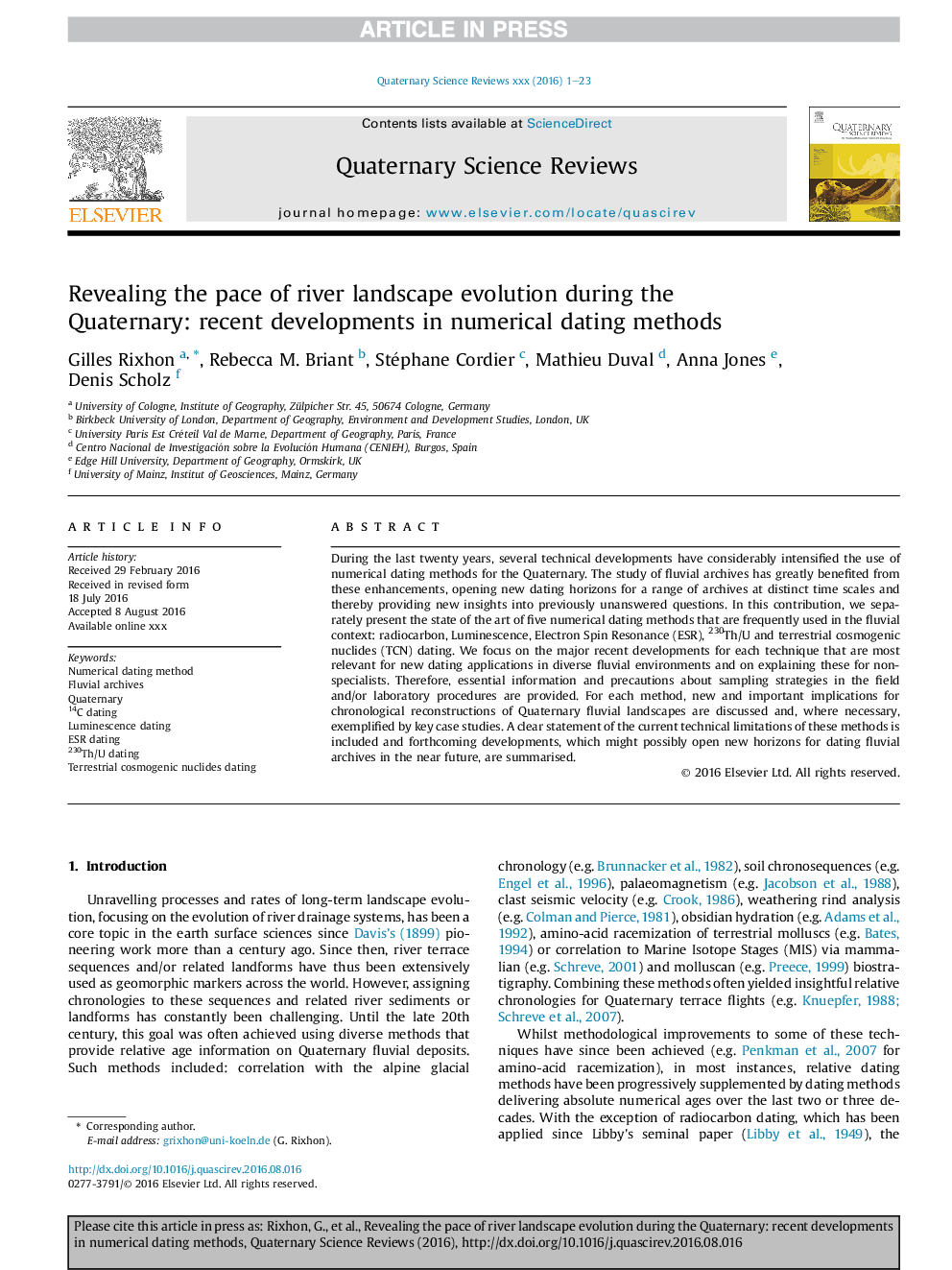| Article ID | Journal | Published Year | Pages | File Type |
|---|---|---|---|---|
| 5786716 | Quaternary Science Reviews | 2017 | 23 Pages |
Abstract
During the last twenty years, several technical developments have considerably intensified the use of numerical dating methods for the Quaternary. The study of fluvial archives has greatly benefited from these enhancements, opening new dating horizons for a range of archives at distinct time scales and thereby providing new insights into previously unanswered questions. In this contribution, we separately present the state of the art of five numerical dating methods that are frequently used in the fluvial context: radiocarbon, Luminescence, Electron Spin Resonance (ESR), 230Th/U and terrestrial cosmogenic nuclides (TCN) dating. We focus on the major recent developments for each technique that are most relevant for new dating applications in diverse fluvial environments and on explaining these for non-specialists. Therefore, essential information and precautions about sampling strategies in the field and/or laboratory procedures are provided. For each method, new and important implications for chronological reconstructions of Quaternary fluvial landscapes are discussed and, where necessary, exemplified by key case studies. A clear statement of the current technical limitations of these methods is included and forthcoming developments, which might possibly open new horizons for dating fluvial archives in the near future, are summarised.
Related Topics
Physical Sciences and Engineering
Earth and Planetary Sciences
Geology
Authors
Gilles Rixhon, Rebecca M. Briant, Stéphane Cordier, Mathieu Duval, Anna Jones, Denis Scholz,
